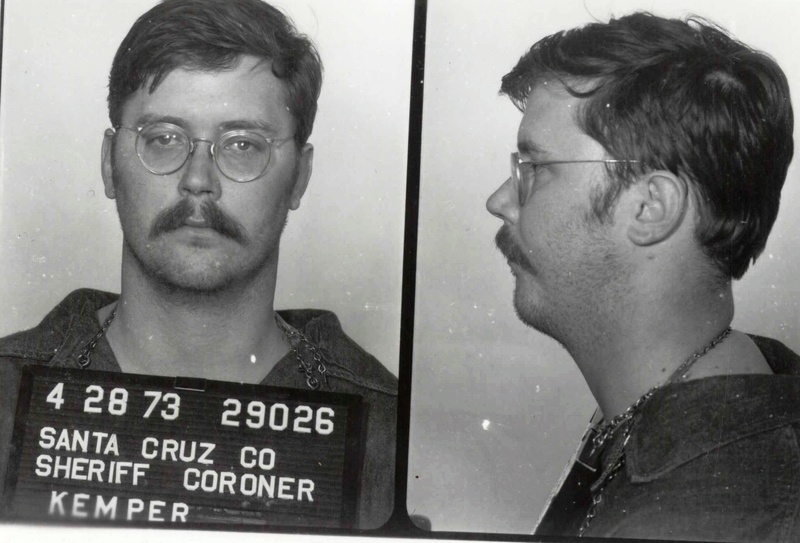In Serialization, Clarion writer Ashley Brown takes a look at some of the most infamous serial killers in history, the crimes they committed and analysis of why they did it. These articles are in no way trying to glorify the horrific crimes of the killers mentioned and will include graphic content. Reader discretion is advised.
Edmund Kemper, also known as the Co-Ed Killer, was a serial killer in the early 70s. He committed multiple killings during this time before turning himself in.
In his childhood, his mother was emotionally and physically abusive. When Kemper was a young child his mother often refused to coddle him because she was convinced it would turn him gay. When Kemper’s father abandoned the household when he was nine-years-old, he was left with his abusive and alcoholic mother.
She forced Kemper to live in the basement and would often insult him. She would commonly tell Kemper no woman would want him or find him attractive.
During this time he began showing troubling behavior. He would often remove the heads of his sister’s barbies. In addition, he would play games at school with dark themes, that would often have the girls blindfold him and lead him to a chair and act like he was in an electric chair.
When his sister was teasing him one day about kissing his teacher he replied: “If I kiss her, I’d have to kill her first.” He also killed the two family cats by cutting one with a knife and burying the other one alive.
By the age of 15 his mother sent him to live with his grandparents, which he hated. He finally snapped and killed his grandma by shooting her in the kitchen following a heated argument. He waited for his grandpa to arrive home and went outside with the gun and shot him next to his car.
Following the murder of both grandparents, Kemper called his mother to tell her what he had done. She told him to call the police and tell them, which he did. When in custody he was asked why he carried out such a devious deed. His reply was “to see what it feels like.” He also said he killed his grandpa outside so he would not have to see his wife dead.
Due to him being a minor he went into the custody of the California Youth Authority. There he went through multiple tests. They determined he had a high IQ but was diagnosed with paranoid schizophrenia. This resulted in Kemper being sent to Atascadero State Hospital, which is a maximum security facility for mentally ill convicts.
At age 21 Kemper was released and went back to live with his mother. This went against doctors’ recommendations, due to the amount of past abuse and psychological issues he endured.
Related Articles

He began going to a community college and working various jobs. Due to his incredible large size of 6’9 and weight of 300 pounds, finding work was difficult. He began working for the Department of Transport in 1971. During this time he hung around many Santa Cruz police officers.
Later in the year he was injured and no longer able to work. He gained a settlement and bought a new car, which made him notice the large amount of young women who were hitchhiking. He began to pick up and drive around with and then drop off these young women, which resulted in his desires growing stronger and stronger to the point where he stored a gun in the car.
In an interview, he talks about the urges of bringing the gun out which he says “I didn’t see it then, but it was going to happen. I was playing a dangerous game with a loaded gun.”
In May of 1972 Kemper would claim two victims, Fresno State students Mary Ann Pesce and Anita Luchessa.
He would finally pull the gun out and act on a fantasy that he had only dreamed of many times before. He took one girl into the woods at gunpoint and left the other tied up in the car.
They found and identified a severed head in the woods that would be identified as Pesce. The remains of Luchessa were never found. Kemper would later admit to beheading them both and bringing the corpse back to his apartment.
After these two murders he would go on and kill four other girls. When asked about why he killed the girls his reply was “My frustration, my inability to communicate socially, sexually. I wasn’t impotent, but emotionally I was impotent.”
Kemper committed his last two murders in April of 1973. He went into his mother’s house and killed her in her sleep. He did this by hitting her in the head with a hammer and slicing her throat. He would then dismember his mother and hide her remains. Kemper then called his mother’s friend Sally Hallett and invite her over, only to strangle her and hide the remains.
Kemper would then flee to Colorado, where he would call the Santa Cruz police department and turn himself in. Many that knew him did not believe the man they referred to as Big Ed and enjoyed being around was the mastermind behind such gruesome crimes.
Kemper was charged on eight counts of first-degree murder in November of 1973. He is currently in the California Medical Facility in Vacaville where he will serve eight concurrent life sentences. He has been denied parole several times, with the next hearing set for 2024.
Like Ed Gein, Kemper has made his presence felt in various forms of media, including being an inspiration for the character Buffalo Bill in Thomas Harris’ 1988 novel “The Silence of the Lambs” and its 1991 film adaptation. Author Dean Koontz cited Kemper as an inspiration for character Edgler Vess in his 1996 novel “Intensity.”
The character Patrick Bateman, in the 2000 film “American Psycho” quotes Kemper, though it is mistakenly attributed to Ed Gein.
“When I see a pretty girl walking down the street, I think two things. One part of me wants to take her out, talk to her, be real nice and sweet and treat her right … [the other part wonders] what her head would look like on a stick.”
Ashley Brown
Reporter


